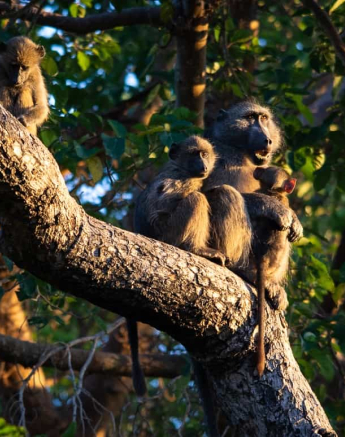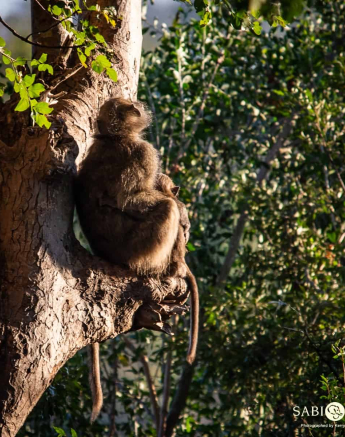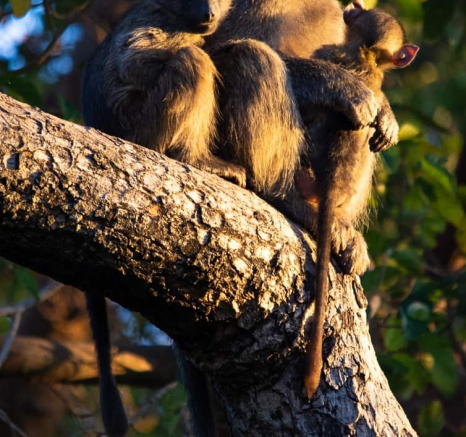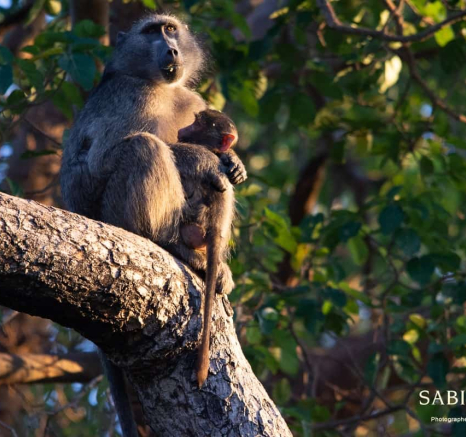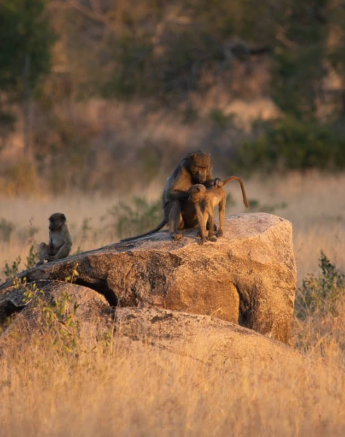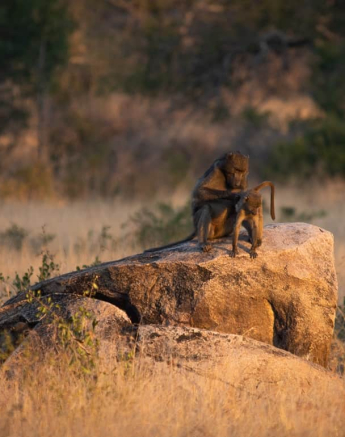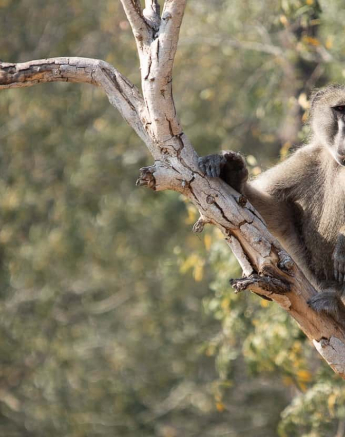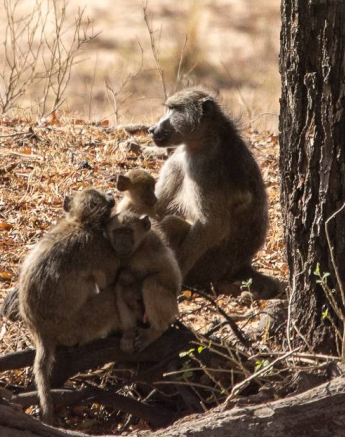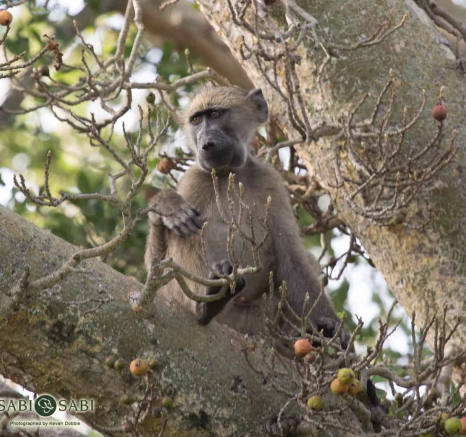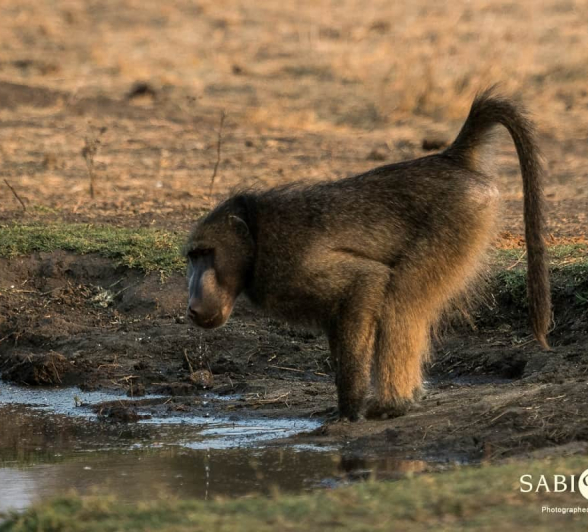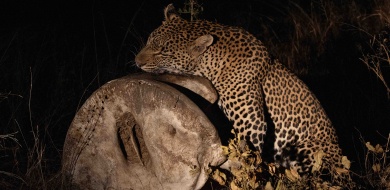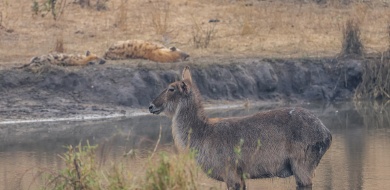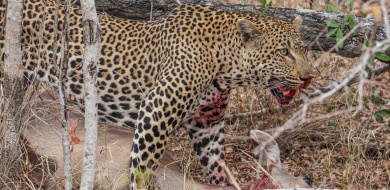Chacma Baboon
on Jan 25, 2019Scientific Name: Papio cynocephalus ursinus
Weight: Male: 27-50kgs - Female: 12-20kgs
Shoulder Height: Male: 72cm - Female: 60cm
General Habitat: Very vast - includes savannah grassland, mountainous areas, arid biomes and coastal belt.
Diet: Omnivorous
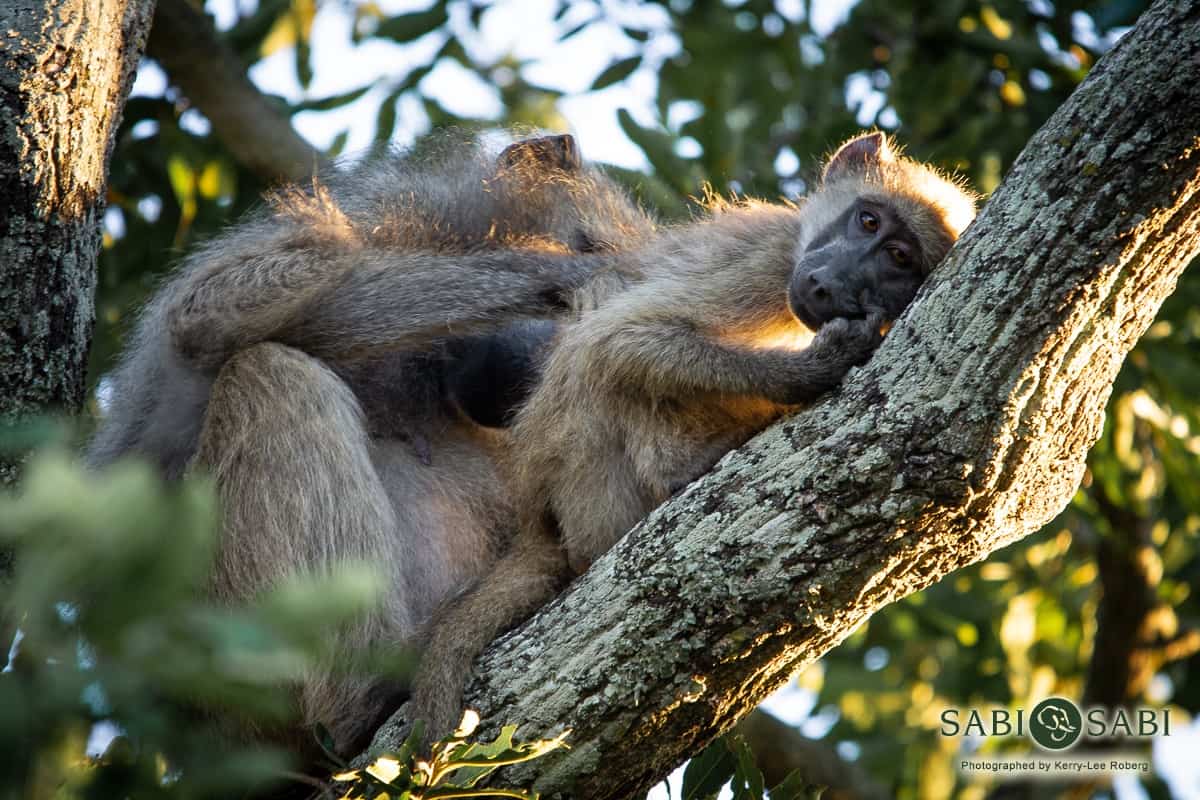
We are often asked early on by guests on safari whether we have monkeys on the reserve and here at Sabi Sabi, two types of primates occur. These are namely Vervet Monkeys and the much larger Chacma Baboon. The Chacma Baboon has adapted remarkably well to human interference and is now the most widespread primate in Africa. Interestingly, a Chacma Baboon is in fact one of the four sub-species of Savanna baboon and the only one which occurs in Southern Africa.
Baboons are extremely social animals and generally form troops of between 15-50 individuals. There is a strict pecking order within the troop where males are always dominant over females. An alpha male is generally the largest, strongest male in the group and plays an integral part as his disposition and experience normally determines the general vibe within the troop and he normally has first pick of any females when mating. Other less dominant males however will also still have mating rights and even form strong bonds with chosen females. New males wishing to join the troop will often play hero to a certain female or two and will rush to not only her defense, but also to that of her baby - all in a bid to be accepted into the group and ultimately earn her trust for a chance to mate in the future.
Baboons are diurnal animals and become active after dawn. The troop will awaken and after playing, grooming and mating, descend their tree to go in search of food and water. Generally, a troop will move between 4-12kms in a day, however, this is dependent on the heat and availability of food and water – groups may exceed 15kms in times of drought. These primates have a varied diet and will feed on insects, frogs, small birds, fruits, grass and shoots. Sometimes whilst walking or driving around in the bush you will notice dung patties which have been overturned – the culprit? Baboons. Baboons are generally a hugely intelligent species and have figured out that if they inspect the underside of old herbivore dung, they may find a termite ‘lucky-packet’. Larger baboons have also been known to capture baby impalas, hares and other small antelope species.
Although baboons are a fearsome species, they still have predators which include leopard, lion, Spotted hyenas and large birds of prey. Not many predators are brave enough to take on a Chacma Baboon, a large male baboon can weigh up to 50kgs and has larger canines than that of an adult lion. Whilst baboons can be dangerous to man, out here in the bush they are normally still rather nervous of man, unlike the hugely brazen and mischievous baboons of the Cape. Often male baboons act as informal sentries, seeking vantage points to keep an eye out for predators, if spotted a loud bark will alert the troop and the alpha male will investigate further.
Chacma Baboons are not territorial but do have a rough home range, the size of this home range depends on availability of food, water and sleeping places. Baboons will normally choose 2-3 different sleeping spots within their home range. We know of one or two of these spots at Sabi Sabi – both are alongside dry riverbeds in beautiful large Sycamore Fig and Jackalberry trees. Large trees offer cover and protection for the night and usually this is also the time where after a 6 month gestation period, pregnant females will choose to give birth. Young baboons cling to their mothers almost constantly for the first month, thereafter they slowly start learning small basic movements. It is only between 3-4 months old that infants start interacting with other youngsters. By one year, baboons are rather independent.
My Memorable Sighting
Although baboons do have a home range, they don’t really have a fixed routine. This means that sometimes seeking out baboons can pose a challenge. I cannot pinpoint a particular sighting that sticks out as baboons are always fun to observe. However, on one occasion we were sitting watching as a troop of baboons were becoming active for the day. They had slept in a beautiful, massive, yellow Sycamore Fig tree and we watched how they leaped with ease between branches, many meters above the ground. Youngsters were squabbling amongst themselves and any misbehaving individuals were quickly reminded what’s what by the elders. On one occasion a tiny baboon lost its footing (just as we were speaking about how incredible their accuracy was) and fell with a thud onto the large root sticking out of the riverbed. We held our breaths and after a second or two he was up and clinging once again to the trunk like a spider. It was especially amazing to see individuals assisting youngsters when they found themselves in a spot of trouble whilst climbing.
Photo Content
